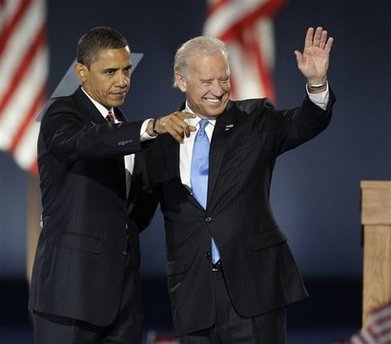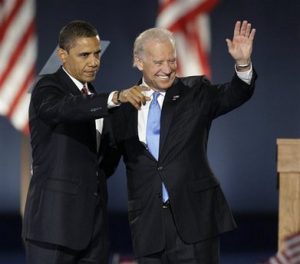Question 2
‘Locker room talk’ has become a highly stigmatized topic post-Trump, with many athletes coming out to publicly condemn Trump’s portrayal of locker room banter (Gregory, 2016). Naturally, this has sparked a new wave on focus on what ‘locker room talk’ actually is and what it is used for. Urban Dictionary proposes three definitions of ‘locker room banter’ that all provide different shades of meaning:
- The crude, vulgar, offensive and often sexual trade of comments guys pass to each other, usually in high school locker rooms. Exists solely for the purpose of male comedy and is not meant to be taken seriously.
- Any manner of conversation that polite society dictates be held privately – with small groups of like-minded, similarly gendered peers – due to its sexually charged language, situations or innuendos.
- Racist, sexist, and crude language most men use towards immigrants, minorities, and women, when they are with their fellow male chauvinistic pigs.
While the provided definitions are an arguably accurate representation of what ‘locker room talk’ has been made out to be, I believe that the definitions do not fully capture the discourse that exists within the space of a locker room. In addition, the definitions are guilty of oversimplifying the social functions of ‘locker room talk’.
The Urban Dictionary has labelled ‘locker room talk’ as “crude, vulgar, offensive”, “sexually-charged language… innuendos” and “racist, sexist and crude”. These definitions are hyperbole, only presenting one façade of the many layers of discourse that exist within a social space. Another key characteristic of ‘locker room talk’ is that it seems to happen within a predominantly, almost exclusively male setting. Without a doubt, such degrading and shameful language that objectifies women does occur, with Floyd Mayweather even coming out to claim that Trump’s ‘locker room banter’ was how “real man speak” (Bieler, 2017). But surely it is a hasty generalization to claim that such manner of ‘locker room talk’ is spoken by every member of every locker room across the sphere. Topics that constitute ‘locker room talk’ range from the mundane: traffic, financial portfolios and cat food (Pennington, 2016) to egocentric claims surrounding their athletic performance (Curry, 1998). We must be careful in an agenda for gender equality and to systemically clamp down on male hegemony that we do not condemn all men to the same trash can and simplify all-male conversation to testosterone-fuelled conversations about sexual exploits.
Beyond the inadequacy of the provided definitions to capture the full range of ‘locker room talk’ is a deeper underlying issue: that such sexual talk happens in social settings amongst males other than in locker rooms as well. Even in a local Singaporean context with no access to an athlete’s locker room, conversation that objectifies women can be routinely heard from bunk talk in an army camp to rowdy conversations in a club at Clarke Quay. The second definition rightly points out the subversive nature of such vulgar rhetoric, that it is routinely manifested in private settings, but ‘locker room talk’ is not exclusively limited to within the locker room. The manner of crude, sexist and vulgar language should not be attributed any more to athletes, by virtue of the brand of hypermasculinity they embody, than to any other male.
However, we cannot deny that in a homosocial environment like a locker room, such talk does exist and studies have found that athletes and fraternity members have higher rates of sexual misconduct (Curry, 1998). From a sociolinguistic point of view, it is worth looking into the motivations behind such linguistic moves and the social function that this sexist brand of ‘locker room talk’ achieves. The definitions provided mention that ‘locker room talk’ exists for “male comedy” and seems to suggest that it is a way for the locker room members to establish a form of superiority over marginalized social groups in “immigrants, minorities and women”.
While serving the function of male comedy, such casual speech used for entertaining men, is definitely relevant and true of ‘locker room talk’, the definition goes on to state that it is “not meant to be taken seriously”. This is a point I seriously contend with as there are greater ramifications of such talk that entail it should be taken very seriously indeed. Language is the most powerful and innate medium available to humans and likewise “shapes our understanding of what we are doing when we do sex or sexuality” (Cameron & Kulick, 2003). Conversation reinforces what we consider to be normative and it is this exact discursive promotion of male hegemony and sexual positions in heteronormativity that is challenged by Queer scholars. As such, whilst one key function of ‘locker room talk’ is definitely for male comedy and entertainment, it should very much be taken seriously as it is belied by a historically prevalent thread of misogyny that has borne out in other manners such as the male gaze.
The definitions provided do not explicitly account for the key social function of ‘locker room banter’ as a bonding mechanism in a homosocial setting. Drawing upon Cameron’s study of fraternity brothers’ speech, it is clear that their conversation served primarily as a bonding mechanism (Cameron & Kulick, 2003). Studies on Japanese hostess clubs also found that men related to each other via heterosexual talk regarding women’s bodies (Allison, 1994). It is likely that ‘locker room talk’ fulfills such an interpersonal function as well, helping to curate the collective male experience via sexual conquests that have become innately associated with what it means to perform masculinity. In light of this, it possible to understand the distinction from “immigrants, minorities and women” as an exemplification of such homosocial bonding. In clearly demarcating who they are not, the men in the locker room are able to rally around their collective identity.
Finally, ‘locker room talk’ has a competitive function to it that is not captured in the aforementioned definitions. Given the concentration of masculine ideologies (toxic or not) in the locker room setting, there is a constant in-group competition within the males themselves (Kane & Disch, 1993). Members must constantly prove their masculinity and establish themselves as dominant members of the group. To avoid jibes and being made fun of, they descend into the rhetoric that affirms traditional masculinity, objectifying women as sexual objects (Curry, 1991). In other words, there is a clear competitive nature in ‘locker room talk’ as well and it functions as a way for members of the locker room to assert their presence and worth over other members.
Question 3
Being sex-positive is fundamentally about recognizing that an individual’s sexual preferences are their own personal choice and that they should not be subject to the moral or social policing of others. In relation to contemporary identity politics, a sex-positive framework furthers the agenda of feminism and fits in with the Queer movement in so far as it challenges the social structures that privilege a normative heterosexual identity.
One of the more defining characteristics of a sex-positive approach is an embracing on a woman’s part to her sexual desires and practices. Already, this challenges the moral imposition on women to guard their chastity as innocuously propagated via the “baseball” metaphor. Traditional masculinity views the female sexuality as something that needs to be pursued and needs to be won over, whereas women are relegated to being the perennial losers. This inherent sexism within sexual relations is best summed up with the quote: “Man fucks woman. Subject, verb, object.” (MacKinnon, 1989). Traditionally, females have always been placed in the subservient position when it comes to sexual relations. Additionally, whereas male sexual promiscuity has become accepted, and even celebrated as a marker of masculine prowess, female sexuality has been frowned upon and has often resulted in name-calling. Women as active sexual subjects have historically subject to widespread social contempt (Cameron & Kulick, 2003).
Being sex-positive tackles these two issues head on, in that it empowers women to take charge of their sexual practices. Females are now empowered, arguably the chief thrust of the feminist agenda. Perhaps the most salient manner in which this has manifested is in the move for sex-positivity to reclaim the label “slut”. Earlier moves by feminists to reclaim the term have not been successful (Epstein & Johnson, 1998), with the label still carrying with it a large power to shame. While general definition today still treats “slut” as a derogatory term hurled at females, sex-positive females seem to have no problem with identifying as a slut to reflect their sexual promiscuity. In fact, the term “slut” has now been divorced from the its sexist roots to be used even by sex-positive males (Barry, 2014). The politics of labelling cannot be understated, given how the term “queer” has been reclaimed to now advance one of the biggest sexual identity revolutions in the modern world (Cameron & Kulick, 2003). Furthermore, the sex-positive approach emphasizes consent as an important aspect of the sexual experience and that a woman’s choice to have as many sexual encounters as she wants is ultimately for her enjoyment as much as her partners’. The implications here for feminism can be seen clearly in that sex-positivity has made important headway in empowering women to take ownership over their active sexual practices, removing the shame and sexism from slut-shaming and promoting women to equal stakeholders in enjoying and constructing a sexual experience.
Also, sex-positivity ties in with the overarching thread found in queer theory. Queer theory challenges the heteronormative approach towards sex and sexuality, marginalizing not only people with overtly deviant sexual preferences such as homosexuals, but also views sexual promiscuity as a deviance from a hegemonic treatment of sex. The queer identity has become an umbrella term for all who do not subscribe to the narrow and restrictive understanding of sex and sexuality. Here, there is a clear intersection between the queer identity and sex-positivity in that an individual should have complete autonomy over determining their sexual preferences and the sexual practices they enact. Sex-positivity advances these “deviant” sexual identities as something that should be a personal choice and most importantly, just another normal and healthy sexual preference.
Finally, sex-positivity brings to the forefront the treatment of the relationship between sexuality and identity in education. The independence and discretion that sex-positivity affords each individual in crafting their sexual identity is undeniably a progressive approach. Where modern identity politics still contend with hegemonic sexual ideologies disseminated in classroom sex education, sex-positivity presents a new, well-articulated definition of sexual identity. Whilst not meant to encourage everyone to deviate from heterosexuality, a sex-positive pedagogical approach will certainly go some ways in promoting acceptance for people who have been marginalized for their sexual identities and practices.
REFERENCES
Allison, A. (1994). Nightwork: Sexuality, Pleasure, and Corporate Masculinity in a Tokyo Hostess Club: University of Chicago Press.
Barry, E. (2014). I’m Sex-Positive, and Most People in Chicago Have No Idea What That Means. Retrieved from https://www.huffingtonpost.com/eric-barry/sex-positive-most-people-in-chicago_b_4733910.html
Bieler, D. (2017). Floyd Mayweather says Trump’s ‘locker-room talk’ is how ‘real men speak’. Retrieved from https://www.washingtonpost.com/news/early-lead/wp/2017/09/14/floyd-mayweather-says-trumps-locker-room-talk-is-how-real-men-speak/?noredirect=on&utm_term=.043a1a11e7e4
Cameron, D., & Kulick, D. (2003). Language and Sexuality: Cambridge University Press.
Curry, T. J. (1991). Fraternal Bonding in the Locker Room: A Profeminist Analysis of Talk about Competition and Women. Sociology of Sport Journal, 8(2), 119-135. doi:10.1123/ssj.8.2.119
Curry, T. J. (1998). Beyond the Locker Room: Campus Bars and College Athletes. Sociology of Sport Journal, 15(3), 205-215.
Epstein, D., & Johnson, R. (1998). Schooling sexualities: Open University Press.
Gregory, S. (2016). Donald Trump Dismisses His ‘Locker-Room Talk’ as Normal. Athletes Say It’s Not. Retrieved from http://time.com/4526039/donald-trump-locker-room-athletes/
Kane, M. J., & Disch, L. J. (1993). Sexual Violence and the Reproduction of Male Power in the Locker Room: The “Lisa Olson Incident”. Sociology of Sport Journal, 10(4), 331-352.
MacKinnon, C. A. (1989). Toward a Feminist Theory of the State: Harvard University Press.
Pennington, B. (2016). What Exactly Is ‘Locker-Room Talk’? Let an Expert Explain. Retrieved from https://www.nytimes.com/2016/10/11/sports/what-exactly-is-locker-room-talk-let-an-expert-explain.html




